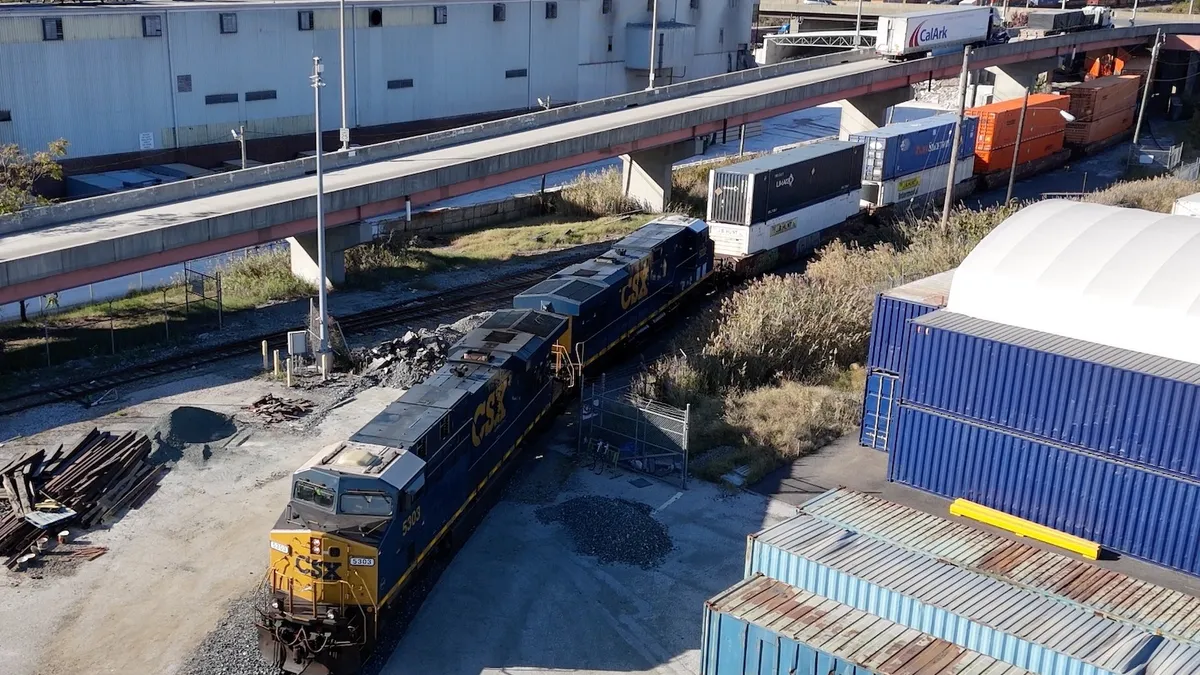CSX locomotives last week began pulling train cars loaded with double-stacked shipping containers from the Port of Baltimore — a sight state, port and railroad leaders have envisioned for decades.
CSX President and CEO Joe Hinrichs described the debut of double-stacking as “a significant milestone,” and Maryland Gov. Wes Moore proclaimed Oct. 28 a “great day for the Port of Baltimore.”
But the work isn’t over yet. The final, and largest, hurdle won’t be cleared until the end of next year, when a federally funded expansion of CSX’s century-old, 1.7-mile Howard Street Tunnel under Baltimore is scheduled for completion.
The project is expected to increase the Port of Baltimore’s annual cargo capacity by 160,000 containers, Maryland Port Administrator Jonathan Daniels said in an interview. The state-owned port typically handles about 1.1 million TEUs annually, though volumes have not fully rebounded from the Francis Scott Key Bridge collapse.
Twenty-one other clearance modifications in Maryland, Delaware and Pennsylvania have unlocked double-stacking along a 1,100-mile northern route to Chicago, which trains will use while the tunnel is under construction, Daniels said.
The northern route is more circuitous than the 800-mile rail line to the Midwest via the tunnel, but the route’s opening to double-stacked trains gives the port a head start, Daniels said.
“This is proof-of-concept to show the viability and valuable nature of having double-stack available at the Port of Baltimore,” the port executive said.
To prepare for higher volumes the tunnel expansion will enable, Ports America Chesapeake is adding new rubber tire gantry cranes and other equipment and infrastructure at Seagirt Marine Terminal, the state-owned container terminal it operates.
The investments, “coupled with double stacking, will boost volumes and position the Port for future success,” Ports America Chesapeake President Mark Schmidt said in the announcement.
Double-stacked trains could have arrived sooner, but the Howard Street Tunnel project was delayed when CSX walked away in 2017 before returning two years later.
Maryland U.S. Sens. Ben Cardin and Chris Van Hollen helped bring the railroad back to the negotiating table.
“Double-stacking opens a release valve on the Port of Baltimore,” Cardin said in the announcement. “It brings our freight infrastructure into the 21st century and boosts efficiency while creating thousands of jobs.”















